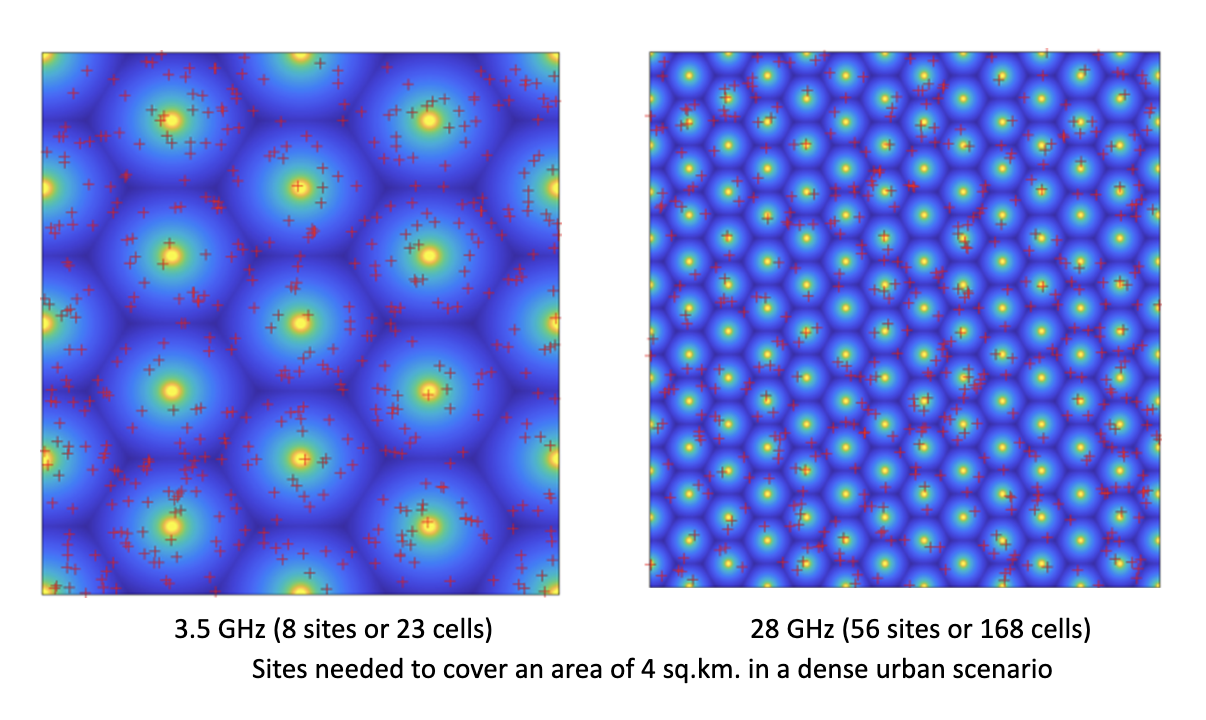17
Jun
5G operator dilemma: Focus on coverage or capacity?

5G has seen unprecedented traction; many flagship devices are already in the market, and many more are on the way, including the much-rumored and anticipated iPhone 5G. After the excitement of limited initial launches, when operators are starting the large-scale deployments, the basic question they are faced with is whether to focus on coverage or capacity. Well, the right answer is both, but that is easier said than done, especially for operators such as Verizon and AT&T that have limited low and mid-band (aka Sub-6Hz) spectrum.
In a series of articles, I will discuss this dilemma and explore the solutions that the industry is working on to effectively address it. Especially the ones such as Integrated Access Backhaul (IAB) that have shown early promise, and many innovations that not only enable such solutions but also make them efficient. This is the first article in the series.
When launching a 5G network, the easiest thing is to utilize sub-6GHz bands, if you have access to them, and provide a basic coverage layer. That is exactly what Sprint (now part of T-Mobile) in the US and many operators outside the US did. However, the amount of bandwidth available in the sub-6GHz spectrum is limited, and hence the capacity in those networks would quickly be used up, especially if the growth of 5G continues as predicted. There is every indication that it will, for example, contrary to what many people expected, 5G deployment in the US is not affected by the Covid-19 pandemic. This means those operators will soon have to move to the bandwidth-rich high-band spectrum, i.e. millimeter wave bands (mmWave). These bands have more than ten-times available spectrum than sub-6GHz, and are critical to deliver on the promise of 5G—multi-gigabit user speeds, the extreme capacity to offer new services, be it fixed wireless access to homes and offices, massive IoT, Mission Critical Services, or bringing new user experiences on a massive scale.
Operators such as Verizon and AT&T, who did not have access to enough Sub-6GHz bands, leapfrogged and took the bold step of launching 5G with mmWave spectrum. This spectrum is far different in many aspects than others that the mobile industry has used so far.
<<Side note: If you would like to know more about mmWave bands, check out my article – Is mmWave just another band for 5G?>>
The biggest differences between Sub-6GHz and mmWave bands are coverage and indoor penetration. Because of their RF properties, mmWave bands have smaller coverage footprint and do not penetrate solid objects such as walls. Although this was long known by experts, it came almost as a shock to uninformed general industry observers. Operators, especially Verizon, got a lot of flak from the media on this. Some even doubted the feasibility of mmWave bands. Thanks to the extensive field tests, any lingering doubts are now duly resolved. In fact, almost all global regions are now working toward allocating the mmWave spectrum for 5G.
By the virtue of a smaller footprint, mmWave will need more sites than Sub-6GHz to provide similar coverage. For example, simulations run by Kumu Networks estimate that 26 GHz spectrum will need seven to eight times more sites than 3.5 GHz spectrum, as shown in the figure below:

